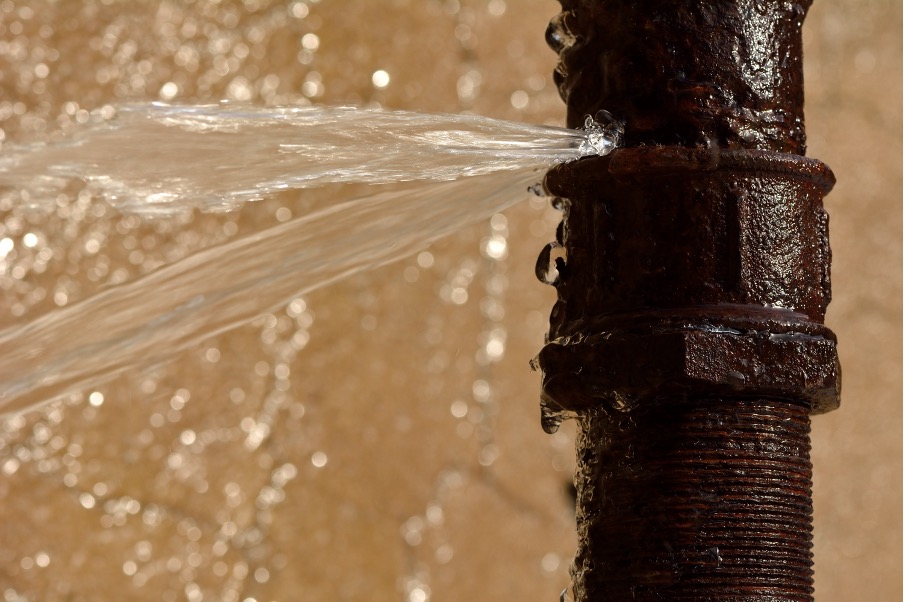This post following next relating to Detecting hidden plumbing leaks is highly captivating. You should look it over.

Early detection of leaking water lines can mitigate a possible disaster. Aside from saving you cash, it will certainly lessen the worry as well as irritation. The moment you find a leakage, calling your plumber for repairs is the most effective service. Some tiny water leaks may not be visible. Below are some hacks that aid if you can not spot it with your naked eyes.
1. Examine the Water Meter
Every house has a water meter. Checking it is a guaranteed manner in which helps you find leakages. For beginners, turn off all the water sources. Guarantee no person will certainly purge, use the faucet, shower, run the cleaning device or dishwashing machine. From there, most likely to the meter and watch if it will certainly change. Considering that no person is using it, there must be no activities. That suggests a fast-moving leak if it relocates. If you discover no modifications, wait an hour or 2 and inspect back once again. This means you might have a sluggish leak that can even be below ground.
2. Check Water Usage
Assess your water expenses and also track your water intake. As the one paying it, you should see if there are any discrepancies. If you find sudden changes, regardless of your usage being the same, it means that you have leakages in your plumbing system. Remember, your water expense must fall under the very same range on a monthly basis. A sudden spike in your expense suggests a fast-moving leak.
Meanwhile, a consistent boost each month, even with the very same routines, reveals you have a slow leak that's likewise slowly intensifying. Call a plumber to completely check your residential or commercial property, especially if you feel a warm area on your flooring with piping beneath.
3. Do a Food Coloring Examination
When it comes to water usage, 30% comes from commodes. If the shade in some way infiltrates your bowl during that time without flushing, there's a leakage in between the tank as well as bowl.
4. Asses Exterior Lines
Do not neglect to check your exterior water lines as well. Examination spigots by connecting a yard hose. Must water permeate out of the connection, you have a loose rubber gasket. Replace this and make sure all links are limited. If you've got a sprinkler system, it will certainly help get it skillfully took a look at and preserved annually. One small leakage can throw away lots of water and increase your water costs.
5. Inspect and Analyze the Scenario
House owners should make it a behavior to check under the sink counters and even inside closets for any kind of bad odor or mold and mildew development. These 2 warnings show a leak so prompt interest is required. Doing routine assessments, even bi-annually, can conserve you from a major problem.
Extra significantly, if you know your residence is already old, maintain a watchful eye on your heating units, hoses, pipelines etc. Look for discolorations and compromising as most devices as well as pipes have a life expectancy. They will additionally naturally degrade due to wear and tear. If you presume dripping water lines in your plumbing system, do not await it to rise. Call a professional plumber today so you do not wind up with an awful mess in your home.
Early detection of dripping water lines can mitigate a potential calamity. Some tiny water leakages may not be noticeable. Inspecting it is a surefire means that helps you discover leaks. One tiny leak can lose lots of water and also increase your water bill.
If you think leaking water lines in your plumbing system, do not wait for it to intensify.
WARNING SIGNS OF WATER LEAKAGE BEHIND THE WALL
PERSISTENT MUSTY ODORS
As water slowly drips from a leaky pipe inside the wall, flooring and sheetrock stay damp and develop an odor similar to wet cardboard. It generates a musty smell that can help you find hidden leaks.
MOLD IN UNUSUAL AREAS
Mold usually grows in wet areas like kitchens, baths and laundry rooms. If you spot the stuff on walls or baseboards in other rooms of the house, it’s a good indicator of undetected water leaks.
STAINS THAT GROW
When mold thrives around a leaky pipe, it sometimes takes hold on the inside surface of the affected wall. A growing stain on otherwise clean sheetrock is often your sign of a hidden plumbing problem.
PEELING OR BUBBLING WALLPAPER / PAINT
This clue is easy to miss in rooms that don’t get much use. When you see wallpaper separating along seams or paint bubbling or flaking off the wall, blame sheetrock that stays wet because of an undetected leak.
BUCKLED CEILINGS AND STAINED FLOORS
If ceilings or floors in bathrooms, kitchens or laundry areas develop structural problems, don’t rule out constant damp inside the walls. Wet sheetrock can affect adjacent framing, flooring and ceilings.
https://www.servicemasterbyzaba.com/blog/how-to-detect-water-leakage-in-walls/

Do you really like more info about Finding hidden leaks? Try to leave a remark below. We would be interested to hear your reactions about this entry. In hopes that you visit us again in the near future. Those who enjoyed reading our blog posting if you please remember to pass it around. Thanks for your time. Come back soon.
Comments on “6 Ways to Locate Concealed Water Leaks in Your Home”